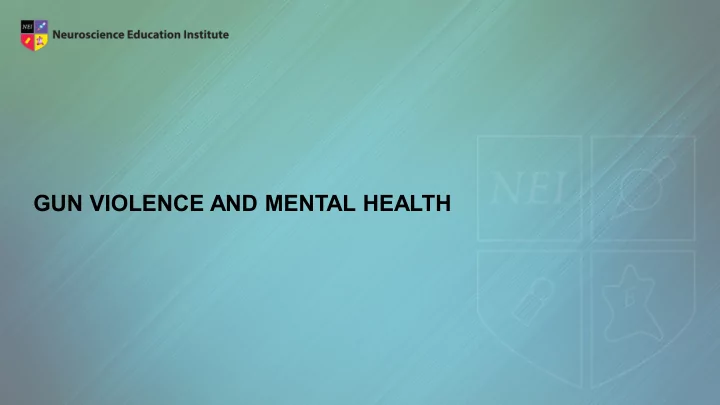

GUN VIOLENCE AND MENTAL HEALTH
Learning Objective •Engage in thoughtful discourse on various topics associated with evidence-based data and public opinion regarding the hypothetical links between mental illness and violence
A Few Facts • In 2017: • 39,773 total firearm deaths • 14,542 homicides • 23,854 suicides • Based on data provided by various news media outlets: • 115 mass shootings (defined as death/injury of 3+ individuals) between 2009– 2019 • 44.3% of perpetrators had no reported history of mental illness • 29.6% of perpetrators had suspected/undiagnosed mental illness based on reports from close family/friends • 26.1% of perpetrators were reported to have a confirmed diagnosis of mental illness • 2.6% of mass shootings involved a female perpetrator (either alone or in partnership with a male) https://webappa.cdc.gov/sasweb/ncipc/mortrate.html
Are mentally ill patients more likely to be victims or perpetrators of violence?
Restricting access to firearms to prevent mass shootings: Everyone or mentally ill individuals only?
Will taking away firearms prevent suicide or will suicidal individuals complete suicide regardless of access to firearms?
Posttest Question Of 115 mass shootings (defined as death/injury of 3+ individuals) between 2009–2019, what percentage of perpetrators had no reported history of mental illness? 1. 24.3% 2. 44.3% 3. 64.3% 4. 84.3%
Posttest Question Of 115 mass shootings (defined as death/injury of 3+ individuals) between 2009–2019, what percentage of mass shootings involved a female perpetrator? 1. 2.6% 2. 4.6% 3. 6.6% 4. 8.6%
Recommend
More recommend